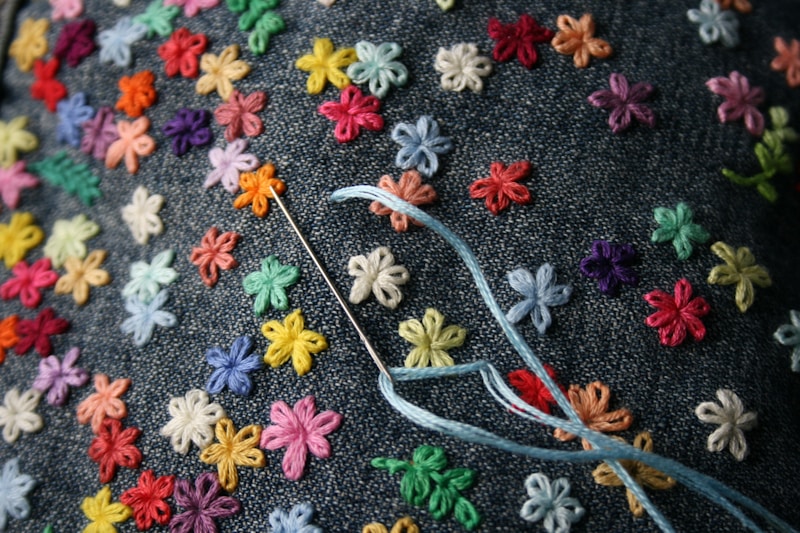Exploring Intricate Embroidery Techniques for Bridal Fashion: A Complete Guide
Exploring Intricate Embroidery Techniques for Bridal Fashion: A Complete Guide
Bridal fashion is an exquisite blend of tradition and modernity, where every detail counts. One of the most captivating elements that can elevate a bridal gown is intricate embroidery. This article will delve deep into the various embroidery techniques used in bridal fashion, exploring their history, significance, and modern applications. If you are a bride-to-be, a designer, or simply an embroidery enthusiast, understanding these techniques can enrich your appreciation of bridal art.
Understanding Embroidery in Bridal Fashion
Embroidery has been an integral part of textile arts for centuries. In bridal fashion, it not only adds aesthetic appeal but also conveys emotion and culture. Each stitch tells a story, making the gown even more special for the bride.
The History of Bridal Embroidery
Historically, bridal gowns adorned with embroidery symbolized wealth and status. In various cultures, certain embroidery patterns held spiritual meanings or were believed to bring good luck. Today, brides can choose from a myriad of designs that reflect their personal style, preferences, and cultural background.
Popular Intricate Embroidery Techniques
| Embroidery Technique | Description |
| 1. Satin Stitch | A smooth, flat stitch that covers fabric entirely, achieving a shiny finish that enhances intricate designs. |
| 2. Chain Stitch | A looped stitch creating a strong, textured line ideal for outlines and intricate motifs. |
| 3. Peking Knot | A decorative stitch that creates raised surfaces for embellishment and texture. |
| 4. Appliqué | Attaching a piece of fabric onto the base fabric to create patterns, often layered for a three-dimensional effect. |
| 5. Needlepoint | A counted-thread embroidery technique that produces striking designs on canvas, often used for a more artistic approach. |
Application of Techniques in Bridal Fashion
Each technique has its unique charm and application, making it suitable for different styles of wedding dresses. Here’s how they can be used to create breathtaking designs:
1. Satin Stitch
The satin stitch is often used in creating floral motifs or initials on bridal gowns. The smooth effect provides a gleaming look, which pairs beautifully with silk or satin fabrics. Many couture designers exploit the satin stitch to create dramatic effects that shine under wedding lights.

2. Chain Stitch
Employed for delicate borders or outlines, chain stitching offers a rustic appeal, particularly in bohemian or vintage-styled gowns. This technique allows for creativity and flexibility, enabling designers to create fluid and organic designs that flow with the fabric.
3. Peking Knot
Peking knots add texture and depth to design. These stitches can be utilized to embellish various parts of the dress, such as sleeves or hems. Their raised surface can catch light beautifully, making the bride glow as she walks down the aisle.
4. Appliqué
Appliqué is particularly popular among designers who want to create intricate patterns. This technique adds elegance and sophistication. By layering various fabrics, designers can play with colors and textures, resulting in unique patterns that stand out remarkably.
5. Needlepoint
While needlepoint is traditionally used for home décor, bridal designers have begun integrating it into gowns for a more contemporary and artsy approach. It allows for complex designs that can incorporate personal stories or motifs significant to the bride.
The Fusion of Modern Techniques with Tradition
In recent years, the fusion of modern embroidery techniques with traditional patterns has created a surge in unique bridal fashion. Designers are now experimenting with digital embroidery, 3D embroidery, and even LED embroidery, which brings a modern twist to age-old customs. This blend not only appeals to modern brides but also pays homage to timeless techniques that have stood the test of time.
Choosing the Right Technique for Your Bridal Gown
When selecting embroidery techniques for a bridal gown, consideration should be given to the overall theme of the wedding. Here are some tips to help ensure a cohesive look:
- Consider Your Dress Style: The intricacy of the embroidery should match the style of the gown. For instance, a minimalistic dress might only require subtle embroidery, while a ball gown could handle more lavish designs.
- Personal Significance: Choose designs or motifs that hold personal meaning. This could be a family crest, floral designs related to your love story, or elements that reflect your heritage.
- Fabric Compatibility: Different fabrics suit different stitches. Ensure that the chosen technique complements the fabric for optimal results.
- Consult with Experts: A knowledgeable designer can guide you in selecting the best techniques for your gown, ensuring that your vision comes to life beautifully.
Conclusion: Embroidery in Bridal Fashion
Intricate embroidery techniques are not just a fashion statement; they are a tapestry of art, culture, and stories that enhance the beauty of bridal gowns. Understanding these methods allows brides and designers to choose the right technique that resonates emotionally and complements aesthetic values. As you embark on your bridal journey, consider incorporating these embroidery techniques to create a gown that is as unique as your love story.
Key Takeaways: When opting for intricate embroidery in bridal fashion, keep in mind the importance of personal significance, compatibility with dress styles, and expert guidance. Whether you prefer traditional motifs or modern techniques, intricate embroidery can make your bridal fashion dreams come true.
